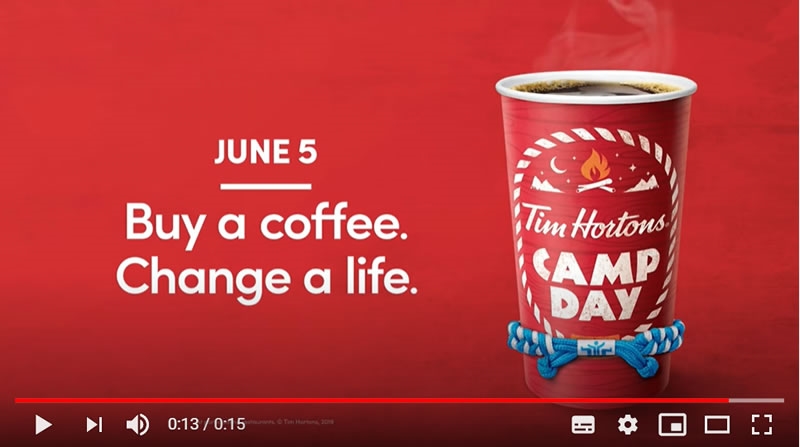Your Video Marketing Guide for Success
I’ve established that a video marketing strategy is a must these days in earlier blog articles like this one. I’ve shared how important it is to engage your audience, and how creating compelling videos can help you increase brand awareness, improve SEO and boost leads and sales.
In fact, Google research shows that 55% of consumers use videos for purchase decisions. According to this research, marketers get 66% more qualified leads per year by using it. And a survey conducted by Wyzowl shows that nearly eight out of every ten users have purchased a piece of software or app after having watched brand videos.
But while I’ve focused a lot on video marketing benefits, what I haven’t covered yet are some of the challenges that small business owners face.
So in this article, I’m highlighting 9 video marketing challenges, and provide a solution to each one.
1. Not having an objective.
It’s crucial to define your objectives. To understand why you’re making videos, go back to your target audience and their pain points. What problem are you going to solve for them? Why should they trust you to help?
Next, think about the type of content you want to share. Here are some examples:
- How-to guides
- Q&As
- Behind-the-scenes glimpses
- Events
- Interviews
- Unboxings (if you have a physical product)
It’s also good to define the type of emotion you want your viewer to feel: touched, excited, inspired…If you’re going for funny and light-hearted, make sure you’re not going to come across as insensitive or even offensive.
GoPro tugged on heartstrings with this 2013 reel of a fireman saving a kitten. It’s received 44,016,668 views to date.
2. Not planning before you hit play.
It’s essential to plan out your delivery before you get behind the camera (or camera phone, in many cases). This is not the time to “wing it.” Write down some bullet points you want to cover—you can even tape them somewhere you can see them while you’re recording.
As with many things, practice makes perfect. Don’t read from a script, because the more conversational and authentic you are, the more connected your audience will feel to you and your brand.
3. Not capturing your audience’s interest.
Just as a compelling headline is essential for your blog article, an opening hook is what’s going to make your viewers watch until the end.
You only have a few seconds to grab your audience’s attention. So decide what question you can ask to pique their curiosity and have them wanting to learn more.
4. Making your messaging too salesy.
Too many small business owners jump right into why you need to buy their product or service, without telling a story or gaining trust.
Determine how you can add value to people’s lives. What can you teach them? How can you inspire or entertain them? If you’re not providing something of value, you’re not going to get the results you’re hoping for.
5. Not including your branding.
I’m sure you’ve watched commercials that stuck with you, but do you always remember the brand that created the ad? While your messaging is a big part of building brand awareness, it’s not everything.
It’s important to brand your content with your website URL and logo to remind people of who you are and keep your company top-of-mind when they do make a purchase decision.

Canadian Tire has a number of how-to videos that always include their logo in the bottom right corner.
6. Forgetting about video SEO.
It’s not just written content that benefits from being well-optimized for search engines. But video SEO isn’t the same as regular SEO. Here are a few basic tips:
- Include a target keyword in your title.
- Say your target keyword (YouTube can understand what you say in your shots).
- Write an engaging meta description not only for people, but for search engines (notably YouTube and Google).
7. Expecting if you build it, they will come.
You’re not likely to get much traction if you put what you film on the homepage of your website and do nothing to let people know it’s there. You need to understand effective video marketing, including:
- Paid ads to drive traffic to your website
- SEO so people find it in the search engines
- Sharing it on social media platforms including YouTube
- Embedding it in a blog post
- Including it in an email newsletter
You’re going to have to work to get an audience. This is where having a professional marketing company who can help you tackle video marketing challenges can be a huge advantage.
8. Not having a CTA.
Your end goal is to have your viewers take action, whether you want them to buy something, like and share your content or subscribe to your newsletter.
It’s wise to tell your audience what you’d like them to do (think of it like a verbal CTA!) and give them a button or link to follow to take the next step. Otherwise, they’ll be much more likely to leave your site and head to your competitor’s.

Tim Horton’s CTA was to buy a coffee to support Camp Day, which sends disadvantaged youth to one of seven camps across North America.
9. Not measuring your success.
You’ll have to decide what some key metrics are for your business, and track how you’re doing. For example, how many people bought the product you’re selling after watching?
If lots of people are watching but nobody is converting into a lead or sale, it’s time to take a closer look at your data to see where and when you’re losing visitors. Try some A/B testing between pages and posts and see how your engagement is with your users.
***
Going forward, effective video marketing is going to be even more important, as more and more people increasingly consume videos over other types of content. While there will always be challenges, the benefits for your small business are great. Now’s the time to dive in and start shooting!
Originally published here.
Digital & Social Articles on Business 2 Community
(64)
Report Post





